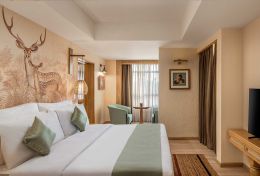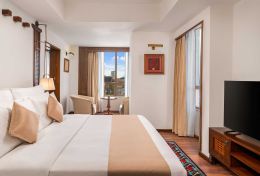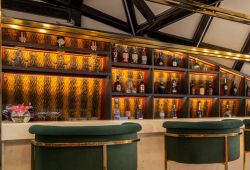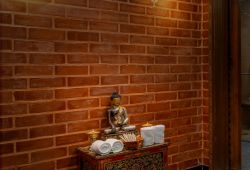Celebrating Seto Machhindranath Jatra in Kathmandu
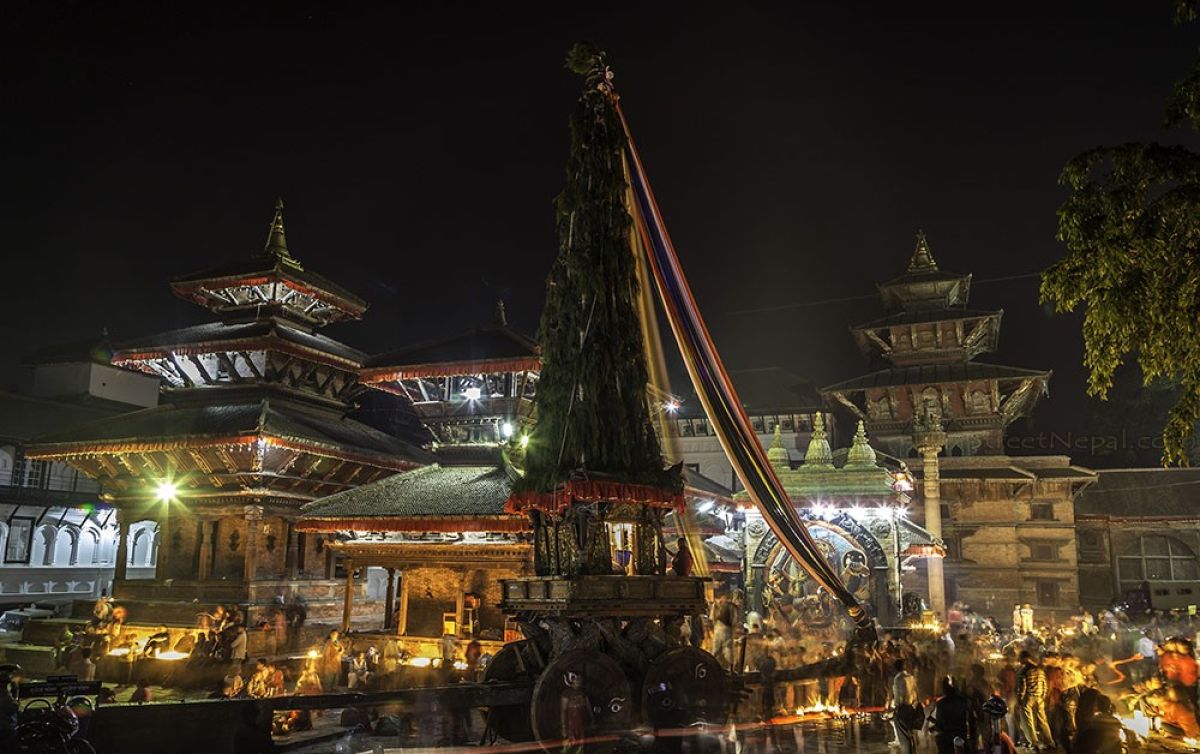
Introduction
Nepal is renowned all over the world for its unique culture, traditions, festivals and jatras celebrated by the diverse ethnic groups of the country. Among the many festivals that fill the Nepali calendar, the Seto Machhindranath Jatra stands out as an ode to the country’s rich cultural legacy and devotion to religion.
The Seto Machhindranath jatra is a 3-day long chariot procession of lord Seto Machhindranath or God of rain. The Seto Machhindranath jatra falls around the end of March or beginning of April and is celebrated among the Newar community of Kathmandu valley. The chariot of Seto Machhindranath is pulled across Jamal, Ason, Indra chowk, Hanumandhoka, Jaisideval and ending at Lagan. Every day, when the chariot reaches its destination, a group of warriors salutes the God by firing their rifles into the air.
About Lord Seto Machhindranath or Awalokiteshwor and Janbahal
Seto Machhindranath is also considered as the god of rain and Awalokiteshwor by Buddhists. The temple of Seto Machhindranath is located at Janbahal in Kathmandu. Janbahal is located at Keltole, junction of Ason and Indrachowk. The temple is believed to have been built during the 10th century. It is the holy place for both Hindus and Buddhists.
The temple of Seto Machhindranath houses a courtyard structure surrounded by houses and shops that sell the items and goods for pujas. The temple with the idol of Seto Machhindranath resides in the middle of the courtyard. Due to the massive earthquake of 2015, the temple entrance was destroyed which is still under construction. Meanwhile the idol of Seto Machhindranath is now placed right opposite of the main temple beside the main entrance gate.
The temple is surrounded by many small idols, shrines and small chaityas along with a mysterious statue of a female figure holding a tray of oil lamps on her head. The temple area has a medium size stage where various religious activities of Seto Machhindranath are held as well. Moreover, the Seto Machindranath temple is one of the hidden gems that every traveler should visit.
Story Behind Seto Machhindranath Jatra
There are several myths and stories behind the celebration of Seto Machhindranath jatra. According to one of the myths, During the reign of Yaksha Malla, Lord Seto Machhindranath appeared in a pond near present-day Ranipokhari. The story behind this unfolds when the deity of death Yamaraj, came to visit Swayambhunath after hearing about the mystical power of it. He came to visit Swayambhunath, a holy place so that he can go to heaven one day.
It is said that after visiting Yamaraj was then captured by the king Yaksha Malla with the help of a priest. In order to free Yamaraj, the King kept a condition to make him immortal. As a mortal god himself, Yamaraj told the king about becoming unable to give the power. Hearing this, the king didn’t let him escape. Yamraj sought out Lord Arya Awalokiteshwor, a Bodhisattva manifestation, to help him escape the monarch.
The white-faced lord with half-closed eyes appeared from the water and informed the king no one could give him immortality. The Lord then asked the King to build a temple where two rivers Bagmati and Kalmati meet. The Lord is said to have told the king “Anyone who visits the temple will live a long life, that’s all I can do”, which left the king with no other option other than to free Yamaraj.
The Lord also said to have told the King to organize chariot procession for three days every year starting from Chaitra Sukla Ashtami so that he could visit and bless the house of people who cannot move with disabilities and have to stay longer in the house. Since then, the procession has taken place every year from the same location where the lord showed himself to King Yaksha Malla.
The Chariot Procession of Seto Machhindranath
The chariot of Seto Machhindranath is built at Durbar marg, Kathmandu. On the first day of procession, the idol of Lord Seto Machhindranath is carried from the temple at Jana Bahal on a palanquin to Durbarmarg from where the procession begins. The idol is then placed inside the chariot with a tower-like roof standing on four large wheels.
The chariot of Seto Machhindranath has 10 storeys which are believed to be the houses of lords Indra, Barun, Kuber, Agni, Nairithya, Bayubya, Bramha, Mahadev, and Narayan, respectively. Meanwhile, the four huge wheels represent separate avatars of Bhairav. The idol of the lord is placed on the first floor of the chariot.
As a statue sits on the chariot, musicians play lengthy trumpets to signal the beginning of procession. Soldiers clothed in historical clothing then form a ceremonial guard of honor, firing rifle salutes with their muskets.
The chariot is then pulled by the crowd through central Kathmandu, followed by a group of cultural musical bands.
The Route of Seto Machhindranath Jatra
On the first day, the chariot is pulled from Jamal, Durbar Marg, Bhotahiti,to Ason, where it stays overnight. The chariot is brought to Indra Chowk and Kathmandu Durbar Square the next day, where it is halted for next stop.
On the third day, the chariot is pulled across Maru, Chikan Mugal, Jaisideval to Lagan which is the southernmost point of Kathmandu. After the chariot completes three laps around the temple that houses Janabaha Dyo’s mother, the procession comes to a finish there.
Whenever the chariot halts, devotees worship the god by lighting rows of butter lamps and bringing trays of offerings.Following a special puja on the fourth day, the idol is returned to the temple. The chariot is dismantled, with the pieces being kept for another year.
Conclusion
To sum up, the Seto Machhindranath Jatra is a lively representation of Nepal’s deep religious devotion and diverse cultural heritage. This three-day chariot parade, steeped in myths and stories, pays tribute to Lord Seto Machhindranath, the rain deity and Awalokiteshwor, who is worshipped by both Buddhists and Hindus.
By combining tales of devotion with worship, the Seto Machhindranath Jatra connects the past and present. It is a dazzling display of color, music, and dedication that extends an invitation to everyone to participate in the numerous customs that make up Nepalese culture.
Celebrating Seto Machindranath jatra with Varnabas Museum Hotel
At Varnabas Museum Hotel, we are proud to showcase Nepal’s diverse cultural mosaic within our walls. We provide visitors the chance to fully immerse themselves in Nepali culture and celebrating festivals of Nepal without ever leaving the comforts of our hotel, thanks to our carefully chosen amenities, delicious food, and immersive experiences. Every element in our rooms, from the elaborate wood carvings to the vivid fabrics, captures the essence of Nepali culture in all its beauty and complexity.
Travelers may experience Nepal in its entirety in a single visit via bookings at the Varnabas Museum Hotel. Whether touring the Seto Machhindranath Jatra or enjoying traditional Newari foods, each moment promises to be a culturally incredible experience. We cordially welcome you to join us as we celebrate Nepal’s culture and make lifelong memories that will never fade. Make your reservation with us right now to fully immerse yourself in the rich cultural tapestry of Nepal.
